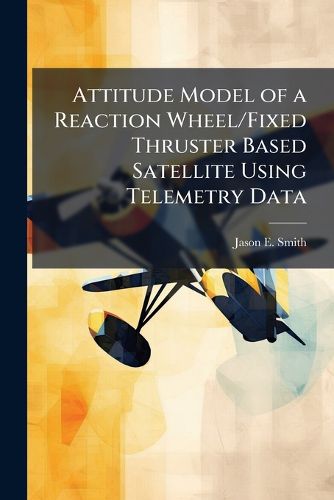Readings Newsletter
Become a Readings Member to make your shopping experience even easier.
Sign in or sign up for free!
You’re not far away from qualifying for FREE standard shipping within Australia
You’ve qualified for FREE standard shipping within Australia
The cart is loading…






Attitude determination of satellites is normally the job of inertial instruments, such as gyroscopes, or through sensing instruments, such as star trackers orGlobal Positioning Satellites (GPS). Satellite health monitoring systems watch and determine if the satellite deviates from its normal operating attitudeorientation. Knowing the orientation of a satellite is essential in being able to control it in order to complete the satellite's designated mission. While there area multitude of ways to determine a satellite's orientation, very little research has been done on determining if the attitude of a satellite can be determineddirectly from telemetry data of the attitude control systems and an accurate spacecraft model. The fidelity of a satellite attitude determination model requiredto get reasonable predictions from using only telemetry data of the attitude controllers, such as thruster on/off indicators and reaction wheel rotor speeds, isinvestigated. Experimental tests using telemetry data received from the Air Force Institute of Technology's (AFIT) Simulated Satellite, SimSat, is used inverifying a Matlab model which outputs SimSat's orientation from SimSat's reaction wheel and thruster telemetry data. Software modeling results showed thatit is possible to determine a satellite's attitude from only the attitude controllers' telemetry data when the satellite's dynamic model is known.
This work has been selected by scholars as being culturally important, and is part of the knowledge base of civilization as we know it. This work was reproduced from the original artifact, and remains as true to the original work as possible. Therefore, you will see the original copyright references, library stamps (as most of these works have been housed in our most important libraries around the world), and other notations in the work.
This work is in the public domain in the United States of America, and possibly other nations. Within the United States, you may freely copy and distribute this work, as no entity (individual or corporate) has a copyright on the body of the work.
As a reproduction of a historical artifact, this work may contain missing or blurred pages, poor pictures, errant marks, etc. Scholars believe, and we concur, that this work is important enough to be preserved, reproduced, and made generally available to the public. We appreciate your support of the preservation process, and thank you for being an important part of keeping this knowledge alive and relevant.
$9.00 standard shipping within Australia
FREE standard shipping within Australia for orders over $100.00
Express & International shipping calculated at checkout
Attitude determination of satellites is normally the job of inertial instruments, such as gyroscopes, or through sensing instruments, such as star trackers orGlobal Positioning Satellites (GPS). Satellite health monitoring systems watch and determine if the satellite deviates from its normal operating attitudeorientation. Knowing the orientation of a satellite is essential in being able to control it in order to complete the satellite's designated mission. While there area multitude of ways to determine a satellite's orientation, very little research has been done on determining if the attitude of a satellite can be determineddirectly from telemetry data of the attitude control systems and an accurate spacecraft model. The fidelity of a satellite attitude determination model requiredto get reasonable predictions from using only telemetry data of the attitude controllers, such as thruster on/off indicators and reaction wheel rotor speeds, isinvestigated. Experimental tests using telemetry data received from the Air Force Institute of Technology's (AFIT) Simulated Satellite, SimSat, is used inverifying a Matlab model which outputs SimSat's orientation from SimSat's reaction wheel and thruster telemetry data. Software modeling results showed thatit is possible to determine a satellite's attitude from only the attitude controllers' telemetry data when the satellite's dynamic model is known.
This work has been selected by scholars as being culturally important, and is part of the knowledge base of civilization as we know it. This work was reproduced from the original artifact, and remains as true to the original work as possible. Therefore, you will see the original copyright references, library stamps (as most of these works have been housed in our most important libraries around the world), and other notations in the work.
This work is in the public domain in the United States of America, and possibly other nations. Within the United States, you may freely copy and distribute this work, as no entity (individual or corporate) has a copyright on the body of the work.
As a reproduction of a historical artifact, this work may contain missing or blurred pages, poor pictures, errant marks, etc. Scholars believe, and we concur, that this work is important enough to be preserved, reproduced, and made generally available to the public. We appreciate your support of the preservation process, and thank you for being an important part of keeping this knowledge alive and relevant.